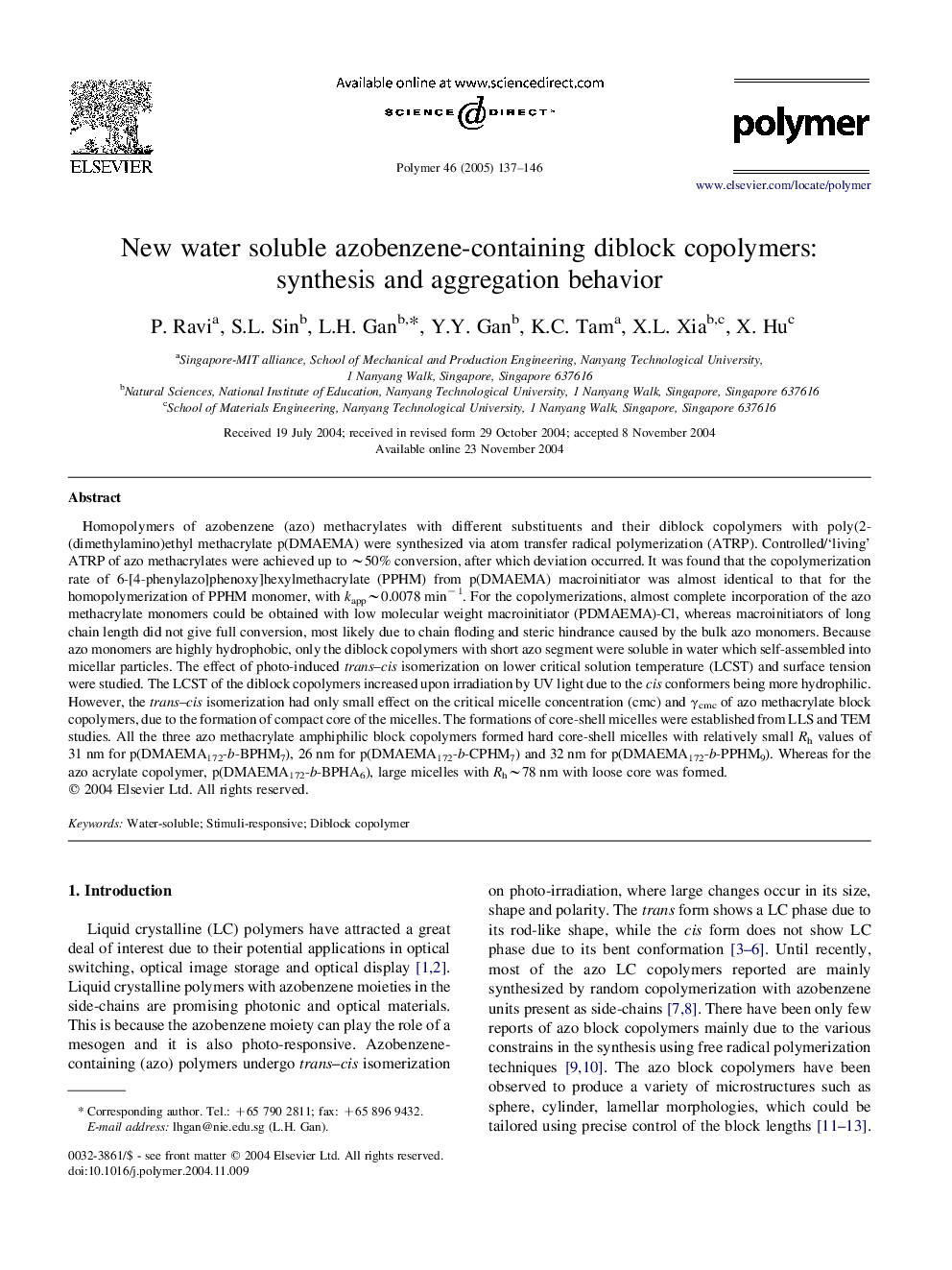| کد مقاله | کد نشریه | سال انتشار | مقاله انگلیسی | نسخه تمام متن |
|---|---|---|---|---|
| 9559764 | 1381246 | 2005 | 10 صفحه PDF | دانلود رایگان |
عنوان انگلیسی مقاله ISI
New water soluble azobenzene-containing diblock copolymers: synthesis and aggregation behavior
دانلود مقاله + سفارش ترجمه
دانلود مقاله ISI انگلیسی
رایگان برای ایرانیان
کلمات کلیدی
موضوعات مرتبط
مهندسی و علوم پایه
شیمی
شیمی آلی
پیش نمایش صفحه اول مقاله

چکیده انگلیسی
Homopolymers of azobenzene (azo) methacrylates with different substituents and their diblock copolymers with poly(2-(dimethylamino)ethyl methacrylate p(DMAEMA) were synthesized via atom transfer radical polymerization (ATRP). Controlled/'living' ATRP of azo methacrylates were achieved up to â¼50% conversion, after which deviation occurred. It was found that the copolymerization rate of 6-[4-phenylazo]phenoxy]hexylmethacrylate (PPHM) from p(DMAEMA) macroinitiator was almost identical to that for the homopolymerization of PPHM monomer, with kappâ¼0.0078 minâ1. For the copolymerizations, almost complete incorporation of the azo methacrylate monomers could be obtained with low molecular weight macroinitiator (PDMAEMA)-Cl, whereas macroinitiators of long chain length did not give full conversion, most likely due to chain floding and steric hindrance caused by the bulk azo monomers. Because azo monomers are highly hydrophobic, only the diblock copolymers with short azo segment were soluble in water which self-assembled into micellar particles. The effect of photo-induced trans-cis isomerization on lower critical solution temperature (LCST) and surface tension were studied. The LCST of the diblock copolymers increased upon irradiation by UV light due to the cis conformers being more hydrophilic. However, the trans-cis isomerization had only small effect on the critical micelle concentration (cmc) and γcmc of azo methacrylate block copolymers, due to the formation of compact core of the micelles. The formations of core-shell micelles were established from LLS and TEM studies. All the three azo methacrylate amphiphilic block copolymers formed hard core-shell micelles with relatively small Rh values of 31 nm for p(DMAEMA172-b-BPHM7), 26 nm for p(DMAEMA172-b-CPHM7) and 32 nm for p(DMAEMA172-b-PPHM9). Whereas for the azo acrylate copolymer, p(DMAEMA172-b-BPHA6), large micelles with Rhâ¼78 nm with loose core was formed.
ناشر
Database: Elsevier - ScienceDirect (ساینس دایرکت)
Journal: Polymer - Volume 46, Issue 1, 6 January 2005, Pages 137-146
Journal: Polymer - Volume 46, Issue 1, 6 January 2005, Pages 137-146
نویسندگان
P. Ravi, S.L. Sin, L.H. Gan, Y.Y. Gan, K.C. Tam, X.L. Xia, X. Hu,